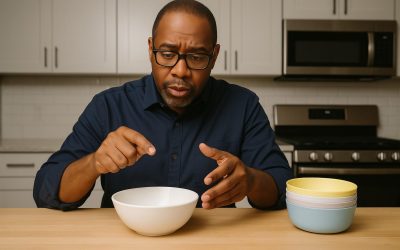As an Amazon Associate I earn from qualifying purchases.
Indian red rice, with its distinctive nutty flavor and rich nutritional profile, is a culinary gem that’s gaining popularity in kitchens around the world. Unlike the more commonly used white rice, red rice is an unpolished grain that retains its bran and germ, making it a healthier and more fiber-rich option. However, cooking Indian red rice can be a bit challenging for those unfamiliar with its unique characteristics. This article aims to demystify the process, providing a comprehensive guide on how to cook Indian red rice to perfection.
From its water-to-rice ratio to the ideal cooking time and methods, each aspect of cooking red rice requires a certain level of understanding and finesse. Whether you are a seasoned cook or just beginning to explore the diverse world of rice varieties, this guide will walk you through the necessary steps and tips to ensure your Indian red rice is not only flavorful but also retains its maximum nutritional benefits. We’ll delve into the best practices for preparation, cooking techniques, and how to incorporate this wholesome grain into your meals. Get ready to unlock the secrets of cooking Indian red rice, transforming it into a delicious and healthful addition to your culinary repertoire.
How to Cook Indian Red Rice?
Cooking Indian red rice is quite similar to cooking other varieties of rice, but it has a few unique steps due to its distinctive texture and nutritional content. Here’s a simple method to cook Indian red rice:
- Rinse the Rice: Start by thoroughly rinsing the red rice under cold water. This step helps to remove any excess starch and impurities. Use a fine-mesh strainer to make this process easier.
- Soak the Rice (Optional): For a softer texture and shorter cooking time, you can soak the red rice in water for 30 minutes to an hour. This step is optional but recommended, especially for Indian rice, which is denser than white rice varieties.
- Use the Right Water-to-Rice Ratio: The ideal ratio for cooking red rice is typically about 2.5 to 3 cups of water for every 1 cup of rice. This higher water ratio is needed due to the rice’s whole grain nature, which requires more water to cook through.
- Cooking the Rice:
- Stovetop Method:
- In a pot, bring the water to a boil and then add the rinsed (and soaked, if applicable) rice.
- Reduce the heat to a low simmer, cover the pot with a tight-fitting lid, and let it cook for about 30-40 minutes. Avoid opening the lid frequently as this lets steam escape.
- Check the rice around the 30-minute mark. When it’s tender and all the water has been absorbed, it’s done.
- Rice Cooker:
- If you’re using a rice cooker, add the rinsed (and soaked) rice and the appropriate amount of water to the cooker and follow the manufacturer’s instructions. The cooking time may vary based on the cooker.
- Resting the Rice: Once the rice is cooked, turn off the heat and let it sit, covered, for about 10 minutes. This allows the grains to settle and firm up, improving the texture.
- Fluff and Serve: Fluff the rice with a fork to separate the grains and serve. Indian red rice has a nutty flavor and a chewy texture, making it a hearty addition to meals.
- Seasoning (Optional): You can season the rice with a pinch of salt when cooking, or add herbs and spices for additional flavor, depending on the dish you’re preparing.
Indian red rice pairs well with a variety of dishes, especially robust Indian curries and vegetables, due to its strong flavor and chewy texture. It’s a nutritious choice, being rich in fiber and antioxidants. Remember, the cooking time may vary slightly based on the specific variety of red rice, so it’s always good to check the texture towards the end of cooking.
Expert Tips
Cooking Indian red rice, known for its nutty flavor and high nutritional value, requires some specific techniques for the best results. Here are some expert tips to help you cook this wholesome grain perfectly:
- Rinse Thoroughly: Before cooking, rinse the red rice thoroughly under cold running water to remove excess starch. This prevents the rice from becoming too sticky.
- Soaking the Rice: Soaking Indian red rice for at least 30 minutes to an hour can shorten the cooking time and improve the texture. Soaked rice tends to cook more evenly.
- Correct Water Ratio: Red rice usually requires more water than white rice. A general rule of thumb is to use a ratio of about 1 part rice to 2.5 parts water. This can vary slightly depending on the desired texture and the particular variety of red rice.
- Longer Cooking Time: Red rice takes longer to cook compared to white rice. Expect a cooking time of about 40-50 minutes after the water has come to a boil.
- Low and Slow Cooking: Cook the rice on a low simmer. This gentle cooking method helps the grains retain their shape and texture without becoming mushy.
- Avoid Stirring: Resist the urge to stir the rice while it’s cooking. Stirring can break the grains and release additional starch, making the rice gummy.
- Let it Rest: After cooking, remove the rice from heat and let it sit, covered, for about 10 minutes. This allows the rice to steam further and helps in achieving a fluffier texture.
- Fluff Gently: Use a fork to fluff the rice gently before serving. This helps separate the grains without crushing them.
- Adjust Seasoning: Since red rice has a robust, nutty flavor, it pairs well with simple seasonings. Consider adding a bay leaf, a cinnamon stick, or a few cardamom pods to the cooking water for additional aroma.
- Cooking in Broth: For an extra flavor boost, cook the rice in vegetable or chicken broth instead of water.
- Pairing with Dishes: Indian red rice pairs well with a variety of dishes, especially robust, spicy flavors typical in Indian cuisine. It’s also excellent in salads, pilafs, or as a wholesome side dish.
Remember, the unique properties of Indian red rice mean it won’t behave exactly like white or brown rice, so these tips will help you navigate its particular cooking needs for the best results.
Storage Instructions
Cooking Indian red rice involves a few key steps to ensure it’s done properly, as this variety of rice has a different texture and cooking time compared to more common types like white rice. Here’s a basic guide on how to cook it:
- Rinse the Rice: Rinse the red rice under cold water until the water runs relatively clear. This removes excess starch and any impurities.
- Soaking (Optional): Soaking red rice for 30 minutes to an hour before cooking can help reduce cooking time and make the grains softer.
- Cooking Method:
- Stovetop: Use a heavy-bottomed pot for even cooking. Add 1 cup of red rice to 2-2.5 cups of water (or broth for extra flavor). Bring to a boil, then reduce the heat to low, cover, and simmer. It typically takes about 30-40 minutes for red rice to cook.
- Rice Cooker: If using a rice cooker, follow the same water-to-rice ratio. Rice cookers can vary, so adjust cooking times according to your specific model.
- Check for Doneness: Red rice should be chewy but not hard in the center. If it’s too tough, you can add a bit more water and continue cooking for a few more minutes.
- Rest the Rice: Once cooked, remove the pot from heat and let it sit covered for 5-10 minutes. This allows the rice to steam and become fluffier.
- Fluff and Serve: Fluff the rice with a fork before serving.
- Storage Instructions for Cooked Indian Red Rice:
- Cooling: Allow the cooked rice to cool to room temperature. Do not leave it out for more than 2 hours to prevent bacterial growth.
- Refrigeration: Store the cooled rice in an airtight container in the refrigerator. It’s best to consume it within 3-5 days.
- Freezing: You can also freeze cooked red rice. Place it in a freezer-safe container or bag. It can last for up to 2 months in the freezer.
- Reheating: When reheating, ensure the rice is heated thoroughly to at least 165°F (74°C). Add a little water when reheating to prevent the rice from drying out.
Following these steps will help you enjoy Indian red rice at its best while ensuring it’s stored safely for later consumption.
Frequently Asked Questions (FAQ’s)
Cooking Indian red rice, known for its nutty flavor and high nutritional profile, can raise several questions, especially for those unfamiliar with this variety of rice. Here are some expert answers to common questions about cooking Indian red rice:
Q: What is the ideal water-to-rice ratio for cooking Indian red rice?
A: The ideal water-to-rice ratio is typically around 1 part rice to 2.5 parts water. However, this can vary slightly depending on the specific variety of red rice and your texture preference.
Q: How long does it take to cook Indian red rice?
A: Indian red rice generally takes longer to cook than white rice, usually about 40-50 minutes. If you soak the rice beforehand, the cooking time can be reduced.
Q: Should I soak Indian red rice before cooking?
A: Soaking Indian red rice for 30 minutes to an hour before cooking is beneficial as it shortens the cooking time and helps the grains cook more evenly.
Q: Can I cook Indian red rice in a rice cooker?
A: Yes, Indian red rice can be cooked in a rice cooker. Use the same water-to-rice ratio, and expect a longer cooking time compared to white rice.
Q: How do I know when the red rice is cooked?
A: The rice is done when it’s tender but still has a chewy texture. It should not be hard in the center or too mushy.
Q: Is there a specific way to season Indian red rice?
A: Indian red rice has a robust flavor, so simple seasonings work well. You can cook it with a bay leaf, cinnamon stick, or cardamom pods for added flavor.
Q: What dishes pair well with Indian red rice?
A: It pairs well with hearty stews, curries, and grilled vegetables. Its nutty flavor also makes it suitable for salads and pilafs.
Q: Can I use Indian red rice for making traditional Indian rice dishes like Biryani or Pulao?
A: While possible, Indian red rice has a different texture and flavor profile compared to Basmati or other traditional rice used in such dishes. It can be used for a nutritious twist, but expect a different outcome in terms of texture and taste.
Q: How should I store leftover cooked red rice?
A: Store it in an airtight container in the refrigerator and consume within 3-5 days. You can also freeze it for up to 2 months.
Q: Is Indian red rice better for health compared to white rice?
A: Yes, Indian red rice is considered healthier than white rice. It’s higher in fiber, vitamins, and minerals, and has a lower glycemic index, making it a more nutritious option.
Understanding these aspects of cooking and serving Indian red rice can enhance your culinary experience and help you integrate this nutritious grain into your diet effectively.
Conclusion
In conclusion, cooking Indian red rice is a straightforward process that yields a delicious and nutritious grain that can be a fantastic addition to your meals. By following the steps outlined in this article, you can enjoy the unique flavors, vibrant color, and health benefits of this ancient grain.
Indian red rice offers a nutty and slightly earthy taste, making it a versatile ingredient that pairs well with a wide range of dishes. Whether you choose to serve it as a side dish, use it in salads, or incorporate it into your favorite Indian recipes, this rice variety can elevate your culinary creations and provide a satisfying meal option.
Remember to rinse the rice thoroughly, use the right ratio of water, and monitor the cooking time to ensure the perfect texture and consistency. Experiment with various seasonings, vegetables, and proteins to create diverse and exciting dishes that showcase the versatility of Indian red rice.
In addition to its culinary appeal, Indian red rice also boasts numerous health benefits. It is a good source of fiber, antioxidants, and essential nutrients, contributing to improved digestion, better heart health, and overall well-being.
So, the next time you’re in the mood for a wholesome and flavorful grain, don’t hesitate to try cooking Indian red rice. With a little practice and creativity in the kitchen, you can unlock the full potential of this nutritious and delicious rice variety.






